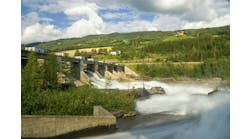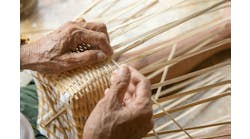I’m known for being clumsy. For this reason, “safety first,” is a motto I’ve always supported. While scrolling through my LinkedIn feed recently, I came across a great example of the way that robots are making some of the most dangerous operations safer for their human co-workers. Cargill’s beef plant in Schuyler, Neb., implemented a robot into its cattle driving process.
I always imagine moving a herd of cattle as similar to cowboys driving cattle in old Western movies. Although it’s now more organized, it’s not necessarily any safer. According to a recent article on Cargill’s news page, the team wears lacrosse helmets and chest pads while they guide the cattle with plastic bags tied to sticks and rely on the series of rails between them and the animals for safety.
So, finding ways to make this process safer for the workers on a large cattle facility is always top-of-mind for management.
“You’re herding live animals. They could turn on you, run you over, kick you, hurt you. So, anything we can to do be safer while we do this, we’re going to do,” said Matt Croghan, yard supervisor, in the article.
After watching a video from a vendor, Brad Chruchill, plant operations manager, was struck with the idea to use the robot featured in the video, which functioned as a security device, to move cattle ─ with some modifications, of course.
“We really had to beef it up,” Chruchill said in the article.
In order to ensure that the robot could be effective and rugged enough for the job, it was upgraded from plastic to metal, wheels were added that allow it to be agile on the trampled and potentially muddy terrain, and a blower was added to help the robot move the animals forward with no physical contact.
To help the robot better mimic its human counterparts, wire-like arms were added with plastic bags attached to the ends and a voice recording was added, saying “Hey, hey, hey! Come on. Let’s move it,” to prompt the cattle to move.
Upon implementation, the team took well to the robot, using the remote control to operate it from catwalks overlooking the pens. Some people are still needed on the ground to close the pens as the animals move toward the plant, but now, they’re able to keep a safer distance.
Churchill and his team continue to improve the technology and hope to see it implemented in other Cargill plants.
“I believe this could be used someday in all of our beef facilities and beyond,” he said in the article. “Finding technology that helps keep our people safe and improves animal welfare is a big win.”



